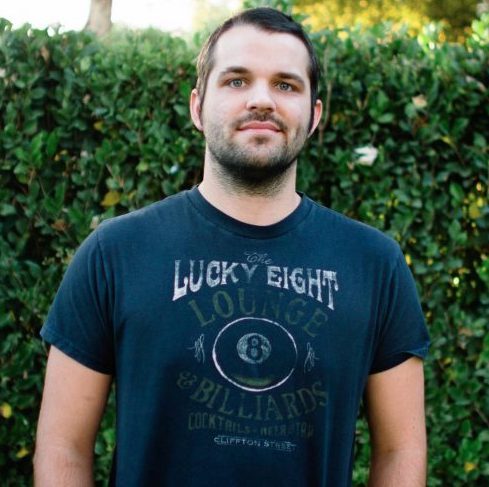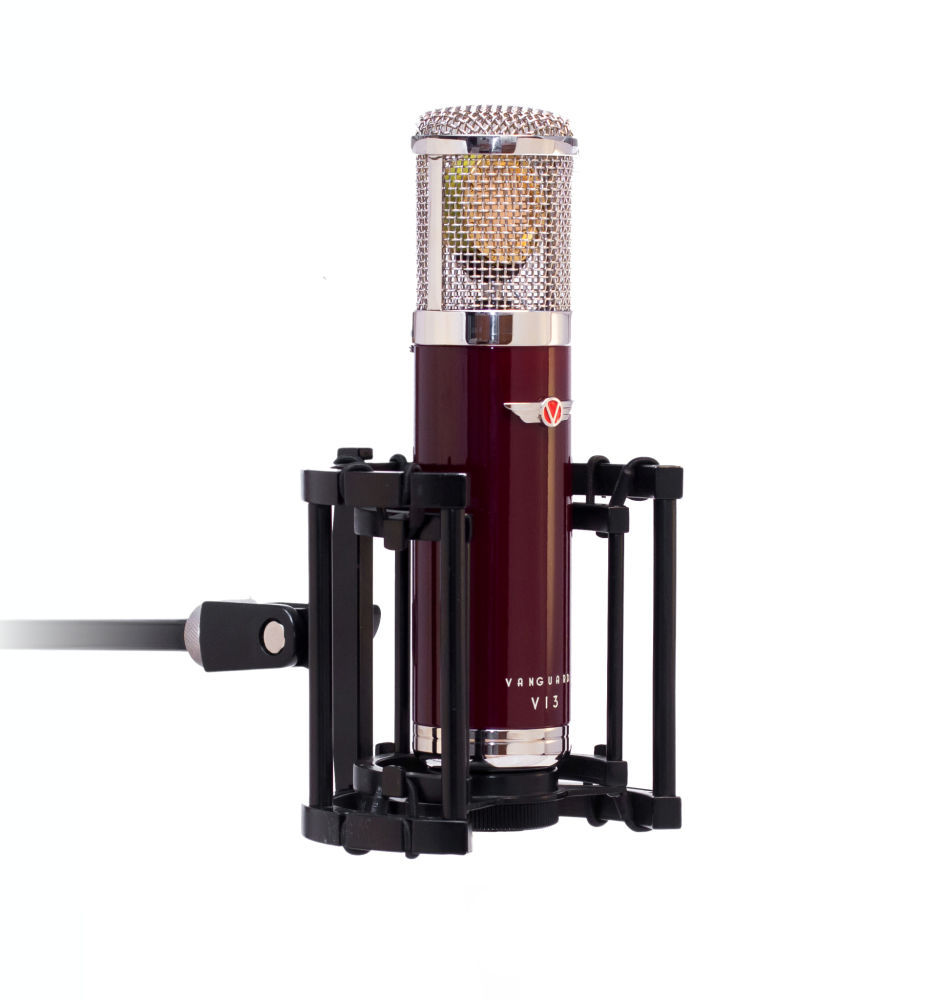Making Affordable Boutique Microphones in the 21st Century: A Conversation with Derek Bargaehr of Vanguard Audio Labs
Gear might be important to us audio nerds, but it’s a niche market.
Most of those who find themselves in the business of making gear are there, not for promises of untold millions, but because they love it.
Many designers fell into the field due in part to a specific need of their own—in addition to a general love for tweaking knobs and making things sound good.
It’s a specific type of person that enjoys spending hundreds of hours trying to get something to sound better—constantly checking, and rechecking different components to the point where it becomes a fanatical obsession, where time invested becomes unimportant compared to getting a design to sound the best it can.
Today’s market is saturated with countless audio hardware devices and software processors. With so much incredible gear available today it’s difficult for products to stand out. One issue commonly experienced by smaller manufacturers is that companies with larger marketing budgets can overshadow makers that don’t have the money to pay for a full page ad in Tape Op Magazine or to sponsor an episode of Pensado’s Place.
I wanted to learn more about these small companies that are working hard to bring great sounding audio gear to musicians, artist, and producers, and to learn more about the processes that go into making audio gear on a more homespun scale.
One company that is taking the time to create remarkable gear at an affordable price is Vanguard Audio Labs, run by Derek Bargaehr out of Upland, California. They are most well known for their prized V13 tube microphone, and have quickly built up an impressive line of original microphones that rival even the most well known brands for a fraction of the price.
If you show up at Vanguard Audio headquarters (which some just call Derek’s house) on any given day, there’s no telling what you might find. One day he might have 50 mic bodies sprawled out along tables getting ready for the next batch assembly; he may be fine-tuning capsules for a new prototype, doing this month’s accounting or creating an original meme for the company’s popular Instagram page.
Derek is a bit of a one-man band, playfully referring to himself on the company’s website as CEO or “Chief Everything Officer.”
At only 30 years old, he is part of a new, younger breed of audio manufacturers that are pouring their heart and soul into creating gear that pushes sonic boundaries.
When I asked him why Vanguard came to be, Derek proudly exclaimed that, “The goal was to prove you don’t need to spend $3,000-$5,000 [on a microphone] anymore to get a record-ready sound.
“If you know what you’re doing, you do the right development, you tune the capsule really well, you tune the circuit to the capsule and get a really good sound. You can do that now without spending thousands and thousands of dollars.”
Origins
Vanguard Audio Labs was started in 2013 when Derek Bargaehr and Ken Avant began developing the prototype for their first large diaphragm tube condenser microphone, the V13. They met while working for Avant Electronics where Ken was the lead designer of their line of microphones and monitors from 2003-2011, which sold under the Avantone brand name. Most notably, he designed the popular Mixcube speakers which are a modern take on the classic Auratone 5C.
After selling the rights to the Avantone line, Ken still had plenty of ideas that were left unrealized, as well as new ideas that he was still eager to try. In 2013, Ken went to Derek and said he believed that manufacturing in China had improved so much in the past few years that he could find the right factories to make good, consistent major microphone components for his new designs—particularly the capsules.
Using contacts from his old company, they were able to locate several specialty factories to produce components made specifically for their microphone designs. Just about everything they make is designed in-house, and then existing factories are meticulously sourced machining the components, after extensive research and development, constant testing, tweaking and A/B-ing by Ken and Derek’s experienced ears. This allows them to sell microphones for a fraction of the price of what they might otherwise cost.
To go from idea to market, the first V13 mic design took three years—two and a half of which were spent on research, development, and testing. And it shows. When you listen to the microphone and look at the attention to detail in the build quality, you know that someone’s heart and soul was put into this thing.
I got a sense for Derek’s genuine love for the products and the process when he talks about his mics and what they bring to the industry.
“While it’s not necessary to spend thousands of dollars on a single microphone anymore, [it] is necessary to spend the proper time on R&D”, he says.
“To experiment and refine and redesign and rethink in order to get the best possible quality. If you want to create bang-for-buck instead of penny-pinching, there are very small and cost-effective upgrades that can create massive leaps in audio quality.”
I wanted to know not only what makes someone start building gear, but what keeps them building it. It’s not a very quick way to amass a fortune. Why wake up and decide to tweak capsules, over and over and over again, sourcing different components, fine-tuning older products? Why deal with customers emails, worrying about accounting or making memes on Instagram?
“I learned pretty quickly that I’m not a great musician,” Derek says. “I’m an okay engineer, but this is what I’m best at and this is what I can contribute to music, and as long as I’m doing that, it’s a worthy thing. It’s something worth doing.”
I started to understand more about where Derek’s sense of satisfaction comes from when he began talking about one of his microphones being used and featured on the album cover of the latest 6LACK album, East Atlanta Love Letter which was released in September by LoveRenaissance and Interscope Records and debuted at number 3 on the US Billboard 200.
“95 percent of the vocals on the record were done on a V13, which is super cool and it makes me happy that someone chose our microphone to hone their craft and make their art. The highest compliment I can get paid is ‘you used my microphone to make music.'”
It’s a sentiment that should be relatable for any artist. To some degree, we all create to inspire, to move, to invoke emotion, and that’s exactly what people like Derek and Ken feel when they see or hear about someone recording their music with one of their microphones. If you spend thousands of hours honing your microphones to sound as good as they possibly can, you wind up being proud of their successes, much like a parent is proud of their child.
It becomes clear that Derek views his craft as an art form when he shares his opinion on mic clones and the trend of copying gear designs of the past.
“At this point, the clone thing is getting kind of saturated,” he says.” We don’t want to make something that everyone else is doing; we want to make something unique because I think that pushes the envelope.
“Musicians take pride in pushing boundaries and being very forward-thinking, yet we look backward for almost all of our analog gear, and I find that a bit odd. As an engineer and a musician, I’m always seeking out gear that isn’t the “#1 seller” or ‘most owned’. I wouldn’t want my music to be a clone of someone else; why would I want my microphone to be that way?
“I honestly think I’d be bored and quit this business if my job was to reverse-engineer an old schematic and figure out how to be a hundred bucks cheaper than the other guy. I want to push the envelope and make things a bit better, not a little bit worse.”
Vanguard’s emphasis on originality and pushing boundaries sets them apart from the average mic company. For a company that only started selling microphones a little over two years ago, they now offer a surprisingly extensive line of microphones and have become a force to be reckoned with capturing the hearts of some well known clients including engineers and producers like Dave Way, Ray Kennedy, Dale Becker, Richard Furch, among many more.
The current Vanguard line includes the V13, V4, V44s, and V1+Lolli system. The V13 and V4 are both large diaphragm condensers, with the V13 being tube while the V4 is FET-based. The V44s is the stereo version of the V4 and the V1 is a multi-capsule small diaphragm condenser with a ton of flexibility.
Their line should only be getting bigger from here. When asked about the future of Vanguard, Derek says “I’m really excited for what the future holds because we’re growing, more people are hearing about us and that means we get to keep making microphones.”
David Silverstein is an audio engineer who works at Sabella Studios. You can find more of his writing on his blog, Audio Hertz.
Please note: When you buy products through links on this page, we may earn an affiliate commission.









